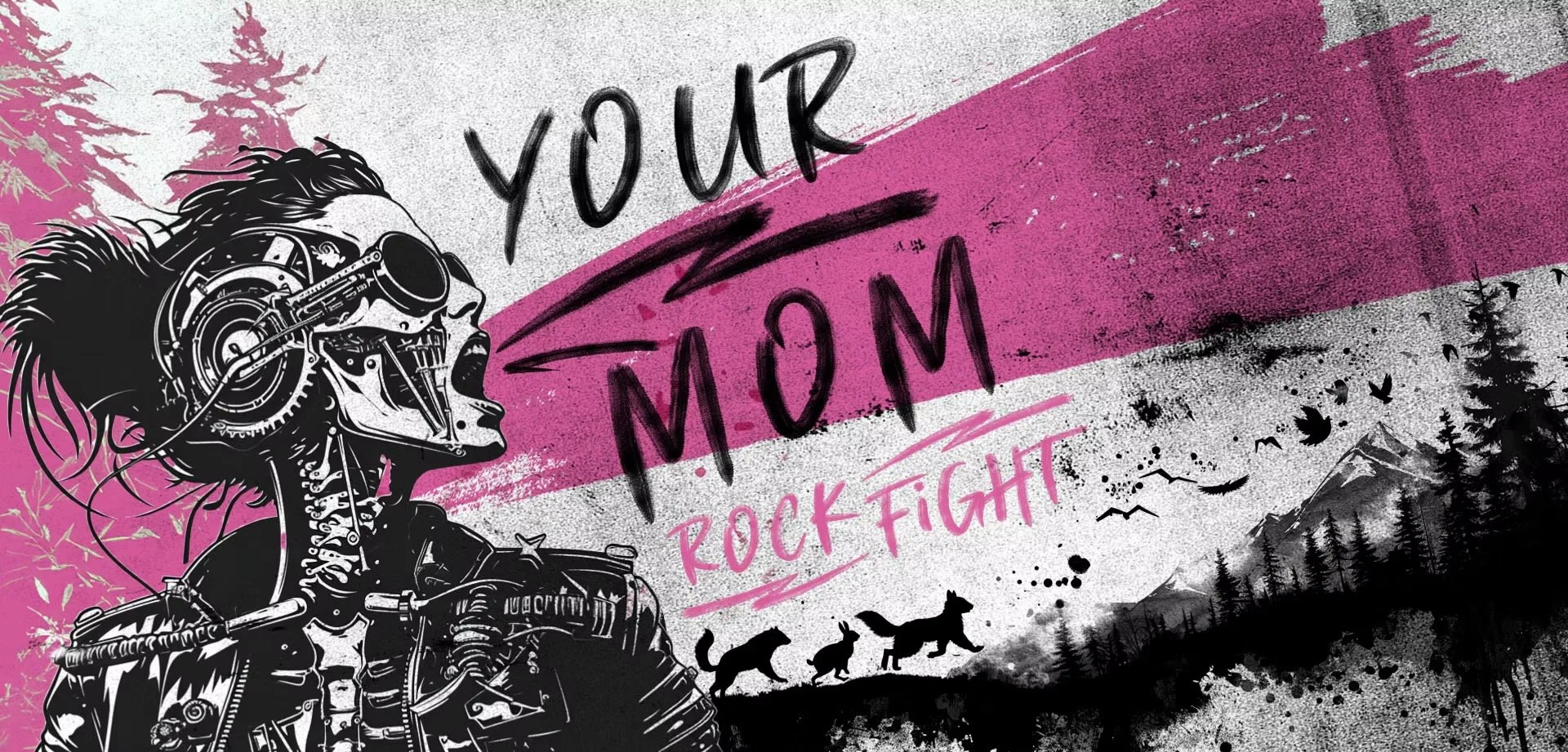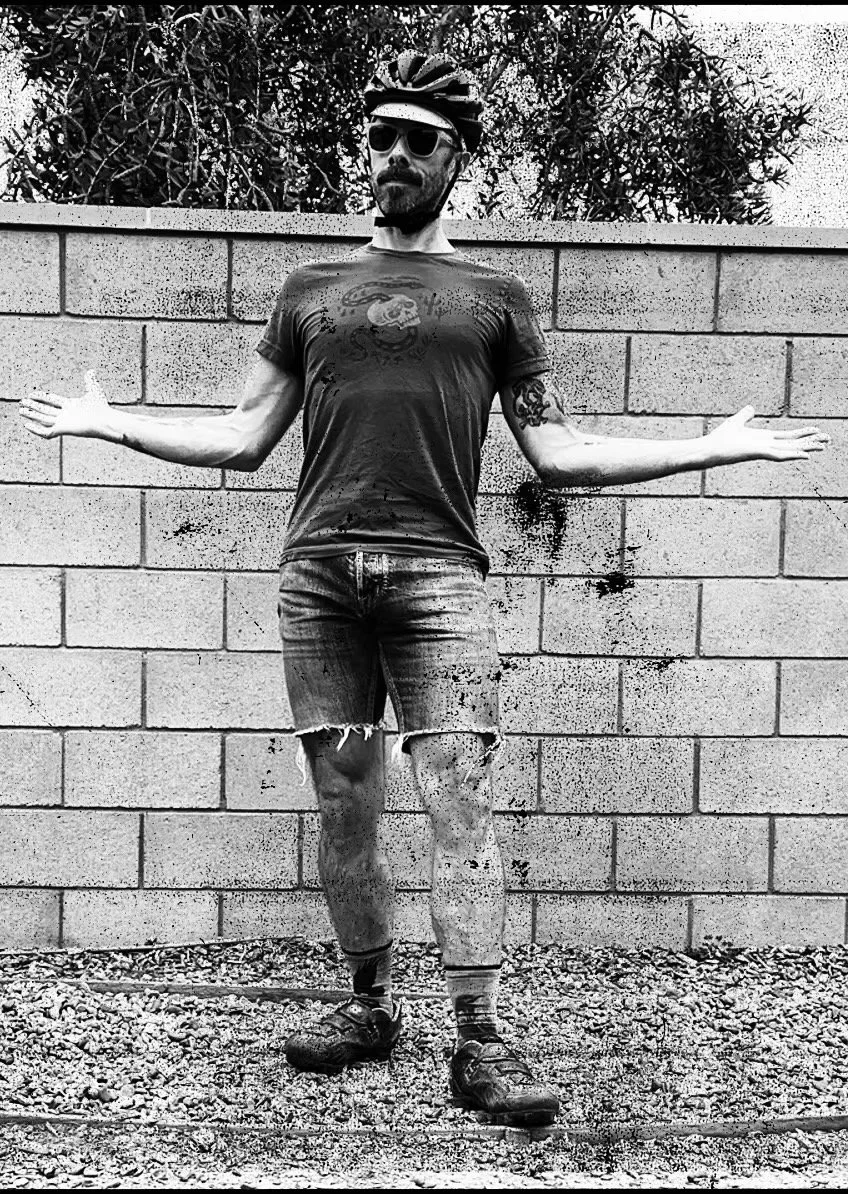Of rock fights and pitons: the thread of snark in outdoor media
In the hazy twilight of 2022, some lonely posts started popping up on LinkedIn about a new media thing that promised to “throw some rocks” at the sacred cows of the outdoor industry.
As a huge fan of both sacred cows and the outdoor industry, I was of course deeply intrigued. I was also fascinated by the mystery of it all, the energy behind the posts, and the general lack of attention the posts were getting.
To paraphrase: “It’s COMING!!!” got one like. “Only one month to go” led to two likes. “The Rock Fight is Alive!” was back to one like. You get the point.
My curiosity about this lonely podcaster wandering the dark woods of LinkedIn was both personal and professional. When you’ve been lurking around the outdoor media landscape as long as I have, you’ve seen the pendulum swing to some crazy extremes, multiple times. Back and forth between too many and too few. Between healthy competition and barely any competition at all. Between a vibrant collection of Teton-esque media peaks and ridges and the smooth rolling flatness of northwest Nebraska.
I was also intrigued by the backers of this supposed idea. Or, rather, the lack of backers. This wasn’t GloboGym, Prestige Worldwide or some other well-known media conglomerate backed by deep pockets and A-list editorial hitmen. It wasn’t an immediately recognizable media byline either, like an Outside refugee, or a Powder magazine expat, or any of those other names that PR people have been dying to put on their monthly PR reports for decades.
But the thing that really got me … the gravy on the cake, so to speak … was that this new media enterprise was staking out a confrontational position right out of the gate. This wasn’t hoping to be a press release recycling facility. Or a keyword optimized affiliate marketing rodeo. Instead, it openly aspired to be that problem child at daycare coming in to mess with the other kids during a little journalistic nap time.
I remember sharing one of those early lonely links with some outdoor industry friends via a COVID-launched text chain. “This is either going to be amazing, or a total train wreck,” I thumbed.
No response.
Fast forwarding to the doorstep of 2025 … and “The Rock Fight” podcast has done more than get noticed. It’s blowing up. I don’t know what the official listenership numbers are for the show, but I do know that it has become regular fodder for outdoor industry nerds around the country, and outside the country as well. Sales reps in Rocky Mountains have told me they binge it on their territory drives. A client in Great Britain told me the podcast was how he was staying in touch with the American outdoor industry. Friends outside the industry have forwarded me links (“have you every heard this guy?’). And it’s even attracting the attention of the rarest of creatures — advertisers.
The Rock Fight’s momentum has spawned one spinoff (“Gear and Beer”) and is on the verge of launching another all because of a fairly simple idea. Creating a talk-centric podcast universe for the outdoor industry that delivers the same honesty, attitude and wise-ass humor that would come out on the trail or at a campsite full of friends.
Ironically, in striving to transcend the press release journalism that currently dominates the outdoor universe, the Rock Fight leans hard on the ubiquity of available press releases. But instead of cutting and pasting them into their own coverage, the hosts — Colin True, Justin Housman and producer David Karstad — use them as red meat for bigger conversations, for reading between the lines, and for spring boarding into tirades about their personal soapboxes … stuff like overproduction and greenwashing, unnecessary products and tone deaf marketing programs, zombie brands and the world’s ugliest outdoor shoes.
The style employed by the Rock Fight is a combination of attitude, energy, and ‘who gives a fuck, let’s try it.” It’s one part cynical, one part self-deprecating, and one part let’s-go-after-the-man together. It has its hits and its misses for sure, but it lives with the consequences.
It also feels incredibly familiar.
Because the same equation that’s fueling the Rock Fight … independent ownership + a relatively fresh media platform + a focus on the outdoor industry + a snarky tone of voice … has been a secret sauce of outdoor media for decades. Maybe longer.
To be clear, most journalists are already deeply snarky. They just don’t get that many chances to flex that muscle, nor should they. Snarking in public isn’t for everybody, as it definitely isn’t a sure thing. Snark can often fall flat, tilting things toward a pillow fight more than a rock fight. And it can also go too far, slipping into the mean-centric world of trolls and other Internet subhumans. Snark carefully, my friends.
But when it works, snark is a phenomenal differentiator. It’s an open embrace of the fact that there’s nothing quite as cathartic as a quality rant — except for watching somebody else lose their mind on a newsworthy topic. Somebody with wit and timing, who says the things that are in your head that you might not want to say, and somebody who can deal with the blowback on their own time.
Snark is also hardly an outdoor industry thing. There’ve been books written about it, scholarly studies on how it eroded traditional journalism, and late night show hosts who’ve made it their life’s work. And what this wide world of snark has shown us is that snark is certainly not perfect, nor recommended for all users, but when used in skilled hands it can verge on brilliance. Because when snark is at it’s best, it brings the audience along for the ride. We’re in on the joke, because snark is most often used in defense of someone, some thing, some idea. And often that target is a pretty big one.
For instance, just last week, Hans Ludwig, otherwise known as the “Jaded Local,” unleashed a snark avalanche on Vail Associates for their handling of the Park City Ski Patrol strike. Published by Mountain Gazette — which has the same foundation of being independently owned, leading-but-not-first in their media world (prestige print), and firmly anchored in the outdoor world — Ludwig’s snarky screed checked all the boxes and went viral overnight, spreading through ski towns faster than a fresh crop of alpine chlamydia.
Ludwig is my favorite snarker in the world right now, and every time a new MG shows up at my house I flip immediately to the back page to see what he’s got to say. Jaded Local got its snarky start in the pages of Powder, where the column built on the tradition of many other grand outdoorsy snarkers. With apologies to the many, many writers that I’m surely missing here, but a few from the broader outdoor space include both bike snarks (Zap Espinoza, Mike Ferrentino, BikeSnobNY, DrunkCyclist) and even ski snarks (Rob Story, Marc Peruzzi). All of whom worked in rarefied air, because they got to write whatever they wanted to. No gear reviews, no service pieces. They just let it rip.
There’s a case to be made that snark appeals to us — we, the outdoor faithful — because the independent-snarky-insider is a foundational personality in the outdoor universe. We’ve all met this person at some point, or worked with one, or maybe even become one. It’s that crusty shop guy tuning skis, the snarky sales manager with a one-liner for every occasion, that road weary rep who’s bringing a healthy dose of gossip into their presentation along with a full array of merino socks and nerdy skull caps, and thousands of other examples. And that familiarity with snark among us may explain why the snarky-outdoor-insider approach has had such a lengthy track record in outdoor industry media as well.
An old SNEWS clip
Back in 1983, when faxes were cool and cell phones were only seen on “Knight Rider,” the big bang of snark happened in the outdoor industry when Bob “Woody” Woodward and Ted Eugenis decided to launch SNEWS … which can only be described now as the granddaddy of outdoor industry snark. Independent and focused on being “dead honest,” according to Woody, SNEWS came to life through an emerging media platform known as the direct mail newsletter. BTW, that’s not a typo … they actually printed them out and sent them in the mail to subscribers.
I remember an old boss both loving and dreading the arrival of the newest SNEWS. He would slice open the envelope with a sigh, eager to relish in the skewering of rivals, but also crossing his fingers that he and his clients weren’t on the hit list themselves.
SNEWS was the straight-talking best friend who occasionally made you laugh and wince at the same time. And the use of snark was more than just an attention getter and a differentiator, it was a reflection of that generation’s outdoor industry.
“It really resonated,” Bob told me a couple weeks ago. “The whole thing appealed to the type of people who were pioneering in the outdoor world. We were reflecting the community out there, and how they liked to do business. But that was a different time. The market right now is pretty bad. There’s no energy. It’s business as usual and pretty boring.”
While SNEWS pioneered snark in the outdoor sector, it eventually became synonymous with the rising influence of the outdoor industry. It went fully online under the steady hand of Michael Hodgson and Terese Ikonian, and grew to become arguably the most dominant and innovative outdoor news source for more than a decade.
But while SNEWS introduced snark, it was The Piton — launched almost 20 years later — that really sharpened the snark stick and poked the industry in the eye.
Arriving in 2004 as a “multi-authored anonymous blog,” the Piton made whatever you were doing online seem way tamer and way lamer. Coming of age the same year as Facebook and two years before Twitter, the Piton was the place to be for online outdoor culture in the early 2000s. And its heavy dose of snark went way beyond the simple goal of brand differentiation. Instead, it was a baseball bat and brass knuckles used in defense of what the authors saw as an outdoor industry losing its way.
For example, here are a few words from The Piton’s final post (which is saved here, and is totally worth the read): “How this industry got taken over by such a bunch of uptight fuckwads is a story that could top the New York Times non-fiction list. The outdoor industry was built on equal parts of inspiration and innovation. Crazy people like Dana Gleason, Yvon Chouinard, Royal Robbins, Fred Williams, Dick Kelty, Wayne Gregory, Bill Masters, Chan Zanzwig, Steve O'Meara, not only innovated gear, but they inspired a generation to flip-the-bird at the life their parents had prepared them for. They inspired a generation to follow a new path that placed the value of experience ahead of climbing the corporate ladder. They could even inspire those who were already stuck with a mortgage to drop it all for 3 weeks a year and go climb, ski, and explore.”
The Piton team was younger than Woody’s Baby Boomer squad at SNEWS, but a little older than Gen-X. They were deep industry insiders who had seen how the sausage got made at every level of the food chain. And since they had full time jobs outside of the Piton, their independence allowed them to give no fucks at all about whether or not it offended an advertiser, of which they had none. Revenue was for suckers.
“The idea came post luau, sitting in a hotel room on one of these multi-generational family vacations to Hawaii. Wired magazine had a section called Wired/Tired/Expired. Multi-authored anonymous blogs were ‘wired,’ so we started one,” said one of the Piton’s still-anonymous founders.
Not only did the Piton take shots at the biggest names and brands in the outdoor industry, it seemed to land every punch. As the ultimate insider blog, the Piton knew exactly who and what it was talking about, even if the reader didn’t.
“For those of us that were part of things in 80’s and early 90’s, the Piton came from a broad frustration of our industry moving from its counterculture, nonconformist roots, to the conforming mainstream,” one of the co-founders told me before the holidays.
“(We started it for) various reasons but primarily it was the general direction of the outdoor industry and its media. Kinda why it should come back methinks,” said the other.
While Woody’s SNEWS was early on the industry newsletter trend and the Piton was early to snarky blogging, neither of them were actually “first” … but both had the energy and personality to make the platform their own.
And so it is with The Rock Fight, following in the footsteps of both SNEWS and The Piton in form, function, and frustrated just enough with the media of the moment as well as the industry of the current time.
“I always thought someone would create something for the outdoors in that same vein as a Ringer or Defector or Buzzfeed or Deadspin (or or or...) for several reasons … So I waited and waited,” said Colin True, founder of the Rock Fight. “My thought was ‘let's make the podcast I've wanted to hear for years, and see if anyone wants to hear it.’ Because even though I believed it was something that would work because no one had even attempted to do an honest podcast about the outdoor industry, I did have some lingering doubts that maybe this was just something that no one else really wanted. Fortunately it seems that it is something that people want.”
Personally, I enjoy The Rock Fight in much the same way that I enjoy the editorial page of whatever newspaper I can find, in whatever city I’m in. Opinions bring the news to life for me, and while I agree with any given position around 49% of the time, I find that 100% of the time I totally enjoy using somebody else’s rant to figure out what my take is on the topic and what I might say in a similar conversation.
There’s often an urge to try and read too much into things … confusing causation with correlation and all that jazz … but I do think the rise of a snarky podcast does echo other rises of snark at other times in the outdoor industry’s lifespan. And I also think that in our current moment, perhaps even more than any of those other ones, the outdoor industry could use a snarky jab or two. If only to show that it can be done, that the audience for independent journalism does exist, and that the counter-culture vibe of the outdoor industry still has a heartbeat.
When I asked Colin what the key element was to the Rock Fight brand, he said much the same thing that Woody said about the original launch of SNEWS — it’s the “brutal honesty” that makes it tick.
The Rock Fighter
“Will that hold as we grow?” said Colin. “I hope so because it's what we need. I'm kinda looking forward to fucking up in a major way (because it's gonna happen) just so we can go on the pod and talk about how we got it wrong. And really these are all qualities that I've learned through outdoor adventure, so in a way I feel like we're already the most legit outdoor media brand because you can't really have an adventure without being honest, fearless, and maybe even a little stupid....maybe not stupid, curious? Is that a better word?”
###






